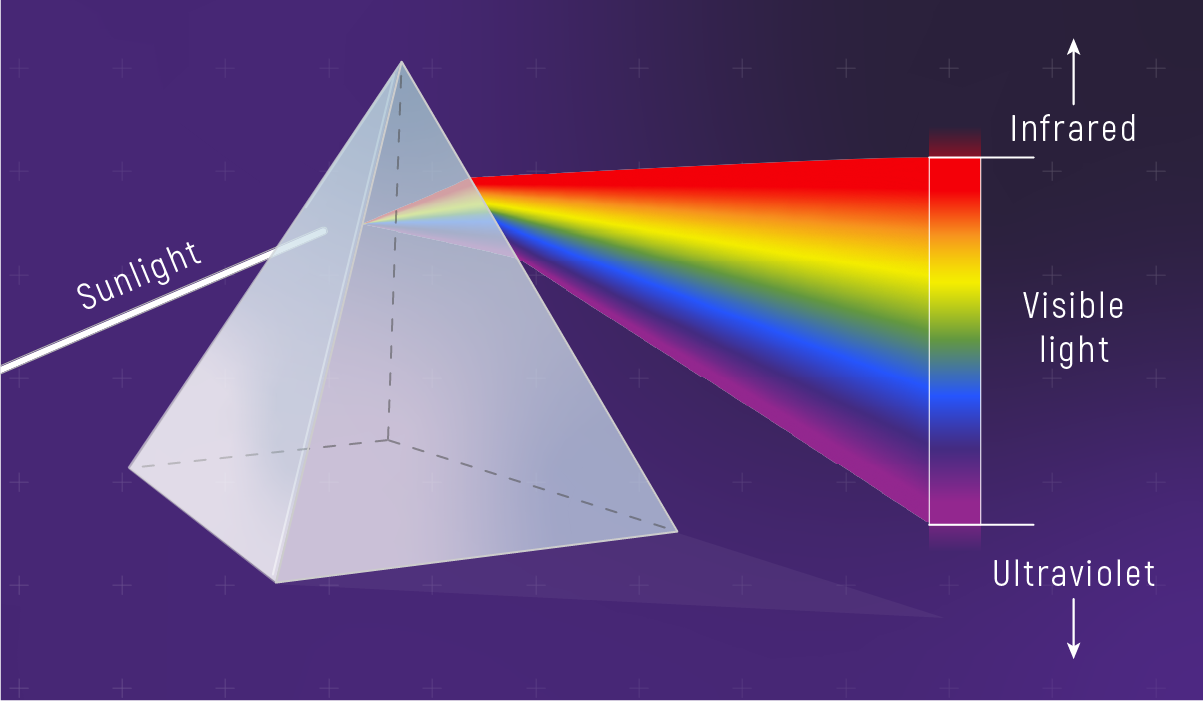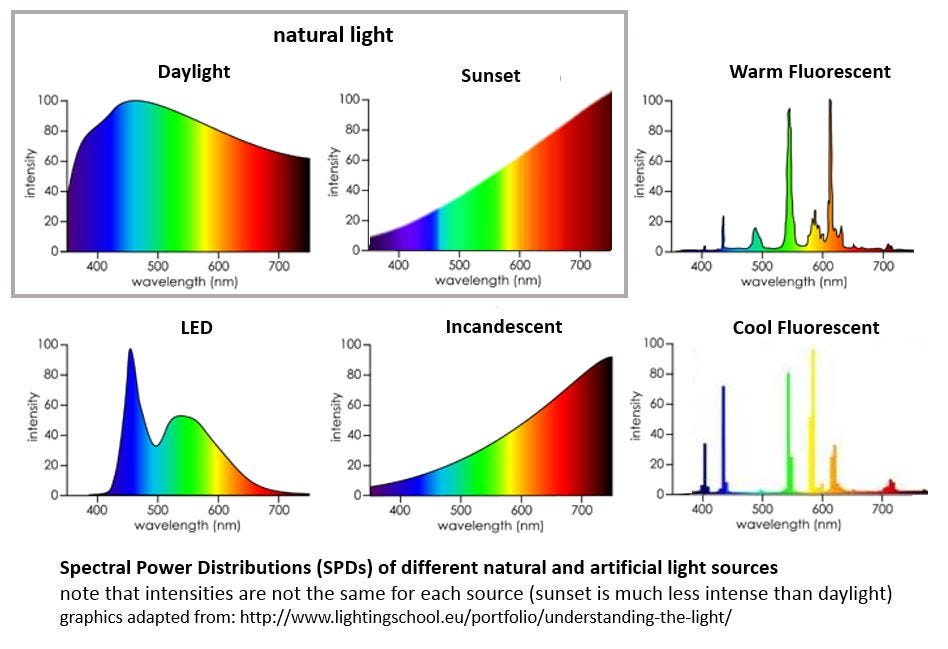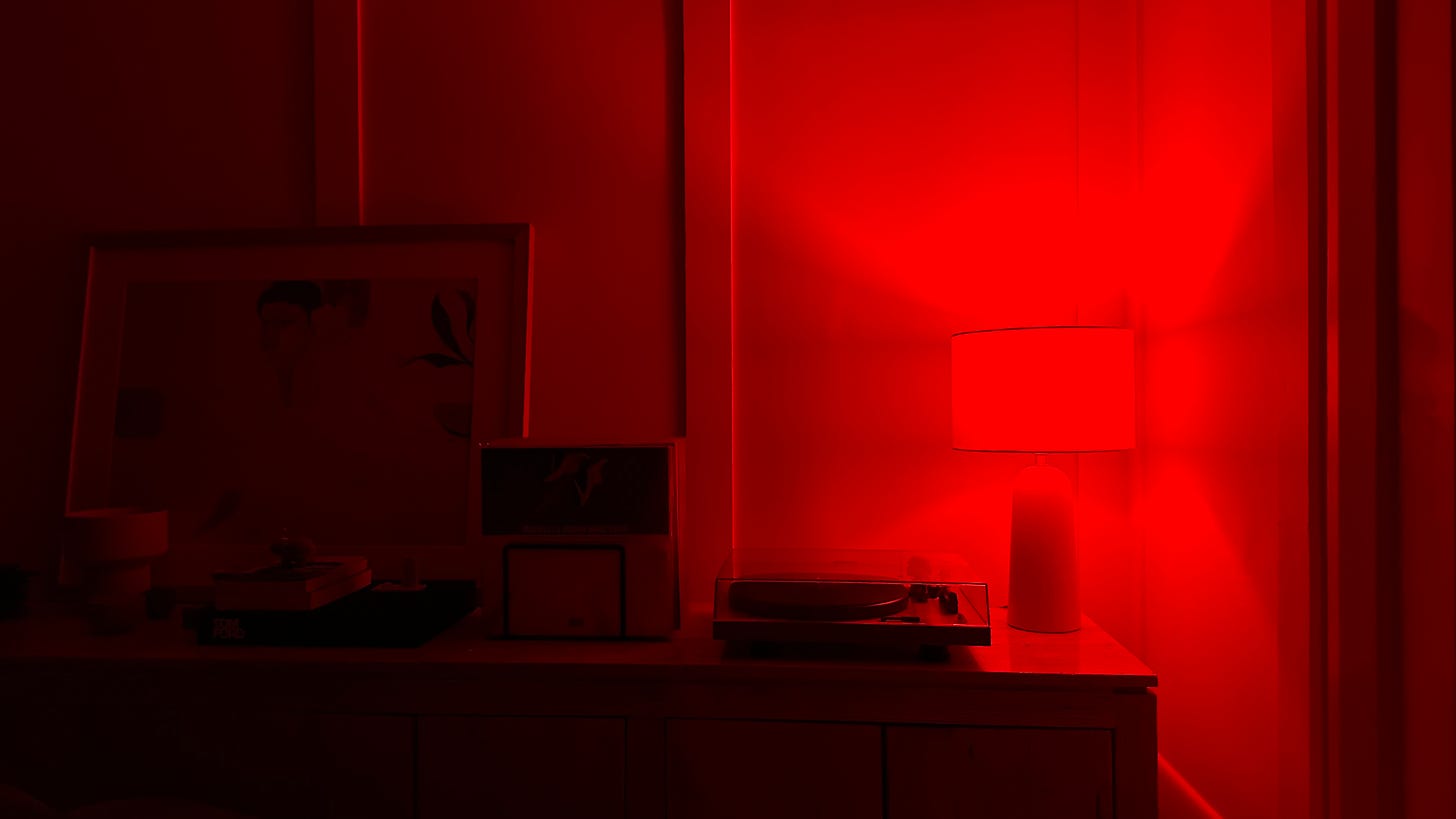Well, what - not who.
A.L.A.N. stands for Artificial Light At Night, otherwise known as man’s mortal enemy.
Let me explain. To begin with - LIGHT. Light is fundamental to all forms of life, but not all light is created equal. The light that comes from the sun, for example, is very different to the light that comes from our phone screens, beyond the fact that one is natural and one is not.
In nature, light is full-spectrum and dynamic, which means that it contains all the colours of the rainbow simultaneously (called ‘visible light’) and changes with the time of day and year (in terms of the intensity of each colour). Our bodies are biologically programmed (via our circadian rhythm) to respond to these changes in light as the day/year progresses.
Artificial light, then - or “junk light”, as it is sometimes referred to - is neither full spectrum nor dynamic. It’s typically blue and/or green and completely unchanging, found in the screens of all our technological devices, LED and fluorescent lightbulbs, and much more. Most people are already aware that “blue light is harmful”, but it’s not as simple as that. Blue light in and of itself is not harmful at all, and blue light - specifically, the presence or absence of it - affects the production of melatonin and controls our circadian rhythm. It also greatly affects our alertness and mood. It is always present in nature, but in varying degrees, and never without its natural remedies or balancers, infrared and red light. Trouble only occurs when blue light is present without infrared and red light - the way it is in our phone screens, for example.
We should be aiming to avoid artificial or junk light whenever possible, but there are certain times of the day when it is particularly harmful to us - like at night. But why?
Firstly, our circadian rhythms. You can think of a circadian rhythm as a kind of internal clock that follows a regular 24-hour cycle, which is regulated by light, and determines our reactions or behaviour throughout the day.
Take sunflowers, for example. They turn their blooms to follow the course of the sun throughout the day, and react most strongly to the sun - to light - in the morning. From afternoon to evening, the light gives them a different cue, and they change their reaction or behaviour accordingly - and gradually stop moving westward.
Similarly, we as humans take morning sunlight as an environmental cue for our hormone centres and neurotransmitters to switch on and “wake up”, and by the time we see sunset, the cue changes to “wind down”, and we start producing greater levels of melatonin to push us towards sleep. That is, if our circadian rhythms are not interrupted by artificial light.
Let’s take a moment to look at an overview of the visible light spectrum during the course of a day:
-
First Light and Sunrise: sunlight/UV is less intense, infrared light dominates before the sun breaks the horizon; red and blue light are balanced as the sun rises; UVA (ultraviolet A) light appears when the sun is 10° above the horizon
-
Solar Noon (when the sun is at its high point): every light frequency is present, including UVA and UVB (though the presence or absence of ultraviolet B light depends on the season); blue and green light dominate, but from here on, blue light will gradually begin to decrease
-
Sunset: sunlight/UV is less intense, blue light decreases more and more, and more yellow and red light is present; red and infrared light dominate
During the earlier part of the day, sunlight already contains more blue light than red light. The blue light that is predominantly present at this time works to suppress the production of melatonin (the hormone responsible for regulating sleep) to keep us awake and alert.
So while it is by no means harmless to be exposed to artificial light (which, as a reminder, is typically blue and/or green) during the day, it is not as harmful to our circadian rhythms as it is at nighttime, because natural blue light is already present.
At nighttime, there should be absolutely zero blue light present in our environment, because it will prevent us from producing the adequate levels of melatonin needed to make us wind down and fall asleep, and in turn, from experiencing deep, restorative and reparative sleep.
If you can’t completely eliminate artificial light at night, please make sure to protect your eyes and skin, which are full of photoreceptors. Photoreceptors detect colours and light intensity and convert them into electrical signals that communicate to our brains and body how we should respond. We suggest that you opt for candles and/or red lights wherever possible, and don both blue-blocking glasses and full-coverage clothes for added protection.
In short, F*CK ALAN.
That’s all.
Cited:
-
https://healthlighting.com/blogs/lighting-guide/guide-to-the-spectrum-of-light
-
https://www.blockbluelight.com.au/blogs/news/enzyme-activation-health-implications
-
https://www.carriebwellness.com/blog/food-doesn-t-matter-as-much-as-light
-
https://www.sunlightinside.com/light-and-health/whats-special-about-natural-light/
-
https://www.sunlightinside.com/light-and-health/natural-light-versus-artificial-light/





